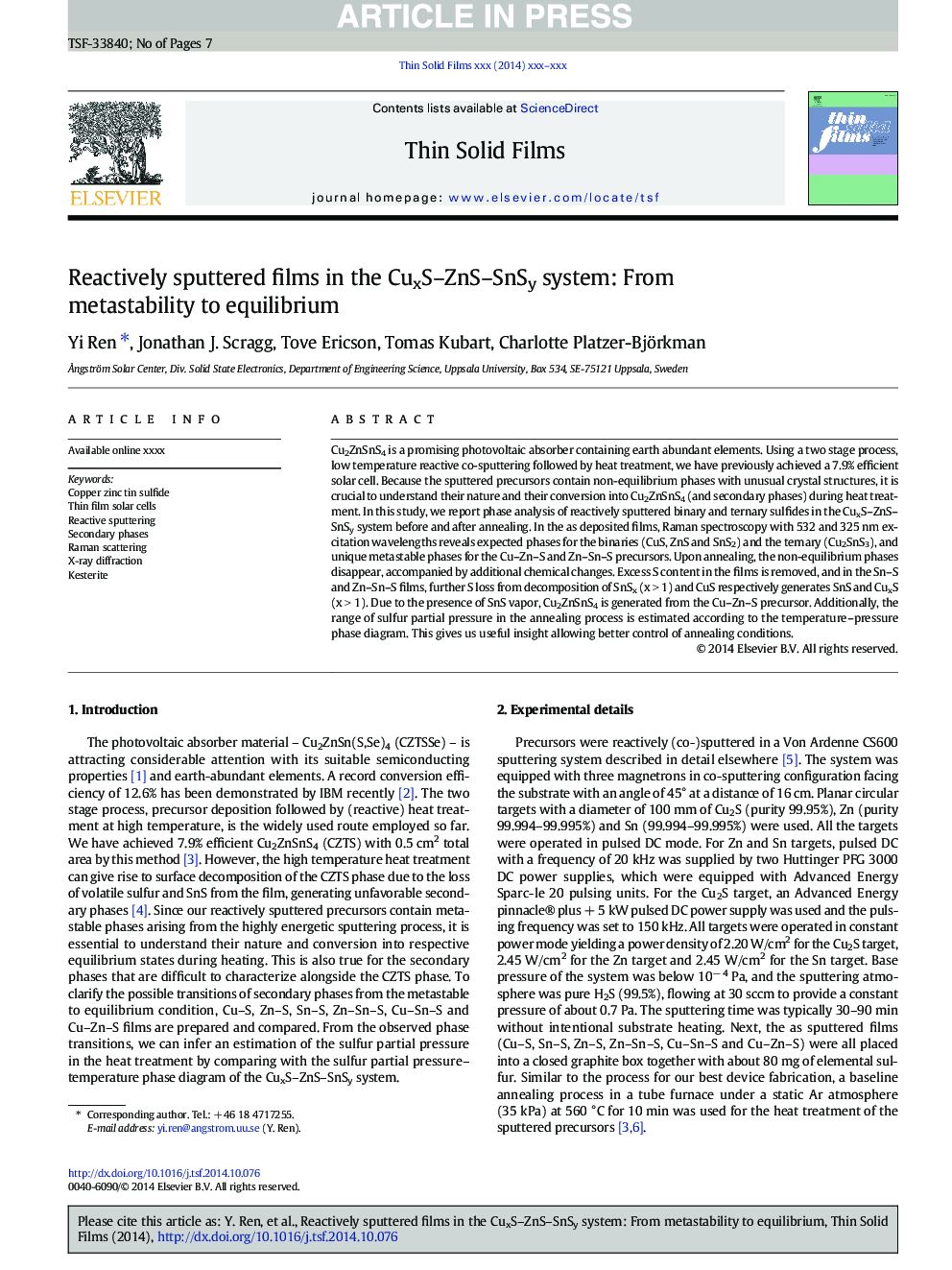| Article ID | Journal | Published Year | Pages | File Type |
|---|---|---|---|---|
| 8034372 | Thin Solid Films | 2015 | 7 Pages |
Abstract
Cu2ZnSnS4 is a promising photovoltaic absorber containing earth abundant elements. Using a two stage process, low temperature reactive co-sputtering followed by heat treatment, we have previously achieved a 7.9% efficient solar cell. Because the sputtered precursors contain non-equilibrium phases with unusual crystal structures, it is crucial to understand their nature and their conversion into Cu2ZnSnS4 (and secondary phases) during heat treatment. In this study, we report phase analysis of reactively sputtered binary and ternary sulfides in the CuxS-ZnS-SnSy system before and after annealing. In the as deposited films, Raman spectroscopy with 532 and 325 nm excitation wavelengths reveals expected phases for the binaries (CuS, ZnS and SnS2) and the ternary (Cu2SnS3), and unique metastable phases for the Cu-Zn-S and Zn-Sn-S precursors. Upon annealing, the non-equilibrium phases disappear, accompanied by additional chemical changes. Excess S content in the films is removed, and in the Sn-S and Zn-Sn-S films, further S loss from decomposition of SnSx (x > 1) and CuS respectively generates SnS and CuxS (x > 1). Due to the presence of SnS vapor, Cu2ZnSnS4 is generated from the Cu-Zn-S precursor. Additionally, the range of sulfur partial pressure in the annealing process is estimated according to the temperature-pressure phase diagram. This gives us useful insight allowing better control of annealing conditions.
Keywords
Related Topics
Physical Sciences and Engineering
Materials Science
Nanotechnology
Authors
Yi Ren, Jonathan J. Scragg, Tove Ericson, Tomas Kubart, Charlotte Platzer-Björkman,
